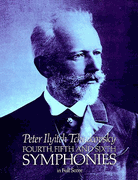| COURSE INFORMATION |
|---|
| Description: | Harmonic and formal analysis of orchestral scores of the music from the Period of Common Practice, including Sonata Form, Concerto-Sonata, Concerto-Rondo, Sonata-Rondo, Binary, Ternary, Theme and Variations and more.
May be taken for graduate credit with the approval of the graduate advisor. |
| Location: | FFA Room M101 |
| Meeting Times | TR, 1200-1250PM |
| Prerequisite: | A grade of "C" or better in MUST 2314 Music Theory IV and MUST 2112 Aural Skills IV, and a passing grade on the music theory "barrier" exam |
| INSTRUCTOR INFORMATION |
|---|
| Name: | Charles Francis Leinberger |
| E-mail: | CHARLESL@UTEP.EDU |
| Office: | Fox Fine Arts Center, Room M432 |
| Office Phone: | (915) 747-7800 |
| Office Hours: | Charles Francis Leinberger's Office Hours |
| Biography: | Charles Francis Leinberger's Biography |
| TEXTBOOKS |
|---|
| Scores: |
Bach: The Six Brandenburg Concertos and the Four Orchestral Suites (Required)
Mozart: Piano Concertos Nos. 23-27 (Required)
Beethoven: Symphonies Nos. 8 and 9 (Required)
Tchaikovsky: Fourth, Fifth and Sixth Symphonies (Required) |
    |
| COURSE GOALS, OBJECTIVES, AND TEACHING PHILOSOPHY. |
|---|
| Course Goal: |
To provide the student with the theoretical knowledge and skills needed for success in a career in music performance, education, or composition. |
| Course Objective: |
Upon successful completion of the course, the student will be able to:
- Gain an understanding of the formal structures of common practice music through harmonic and thematic analysis;
- Recognize a composer's use of chromatic harmony within those formal structures;
- Appreciate the means by which modulation can be accomplished and its role in determining musical form;
- Develop proficiency at reading and understanding orchestral scores.
|
| Teaching Philosophy: |
Charles Francis Leinberger's Teaching Philosophy
|
| COURSE POLICIES |
|---|
The following policies apply to all of Dr. Leinberger's classes:
- Attendance Policy
- Assignment Policy
- Classroom Policy
- Final Exam Policy and Schedules
- Each student should check his or her UTEP email account each day of the semester when registered for this class.
The following policies apply to this class:
- Come to class on time and prepared. Bring the appropriate score every Tuesday and Thursday.
- Assignments are due on Tuesdays and Thursdays at the beginning of class.
- Some listening will be done in class, but the student is responsible for all listening assignments.
- The Midterm Exams will be during class on Thursday of Weeks 5 and 10.
Students will have fifty minutes to complete each exam.
- The Sonata Form Project Presentations will take place in class during weeks 13 and 14.
The projects will consist of five components, each one is worth 25 points:
- 3215SFP1: The first draft of a short paper, between 200 and 250 words (due at noon on Tuesday of Week 10).
The paper should be written in a complete sentences with proper spelling and grammar.
It should also address issues such as key relationships, modulation types, and anything that makes the movement assigned unique.
- 3215SFP2: The final draft of a short paper to be read in class, between 250 and 300 words in length.
- 3215SFP3: A chart of the sonata-form movement that each student was assigned, including Exposition, Development, and Recapitulation.
The chart should also include First Theme and Second Theme, as well as Transition, Closing Theme, and Codetta, if any
- 3215SFP4: Each student will also submit a copy of the movement assigned showing their analysis of themes and harmony.
- The final component is the presentation itself.
Project materials (chart, paper, and analysis of movement assigned) are due at noon on Wednesday of Week 14.
All materials should be submitted electronically, however, photocopies of the movement with hand-written analysis is acceptable.
Email attachments are preferred.
Microsoft Word files or PDF files are recommended.
- Unless otherwise indicated, assignments will be in the form of a Microsoft Word file attached to an email addressed only to CHARLESL@UTEP.EDU.
Do not send email to Blackboard!
When sending assignments by email, students must follow these guidelines.
Failure to follow these instructions may result in no credit being earned on the assignment!
- Assignments must be sent from the student's UTEP email account.
- The "Subject" field of the email must contain "3215" or the email may not be received and read by the instructor.
- The body of the email must contain the student's real name!
Students do not need to include a UTEP student ID number in the body of the email, only in the attached file.
See specific instructions for each assignment by following links in the schedule below.
- The file name of the attachment must follow these guidelines:
- First, it must contain the assignment's due date in the following format: "yyyymmdd..."
For example, an assignment due on February 10, 2011 would begin
"20110210..."
- Next, after the due date and a space, the file name should include the student's UTEP username.
For example:
"20110210 charlesl..." (replace "charlesl" with your UTEP username)
- Next, after the due date, a space, username, and a space,
the file name should include a the assignment code, as found on the syllabus,
such as:
"20110210 charlesl 3215SFP1..."
- Finally, depending on what version of Microsoft Word the student is using,
the file extension will be either "doc" or "docx," for example:
"20110210 charlesl 3215SFP1.docx"
- See Deadlines for Students for all assignment due dates.
|
| SCHEDULE |
|---|
| Week |
Days |
Topic |
Assignment |
Listening |
Test |
| 1 |
T |
Mozart: Piano Sonata in B-flat Major, K. 333 (I) |
Mozart K333 (I), Read Syllabus |
Mozart K333 (I) |
None |
| R |
| 2 |
T |
Bach: Brandenburg 2 (I) |
Bach: Brandenburg 2 (I) |
Bach: Brandenburg 2 (I) |
None |
| R |
Bach: Brandenburg 2 (II) |
Bach: Brandenburg 2 (II) |
Bach: Brandenburg 2 (II) |
| 3 |
T |
Bach: Brandenburg 2 (III) |
Bach: Brandenburg 2 (III) |
Bach: Brandenburg 2 (III) |
None |
| R |
Mozart: Piano Concerto 23 (I) |
Mozart: Piano Concerto 23 (I) |
Mozart: Piano Concerto 23 (I) |
| 4 |
T |
Mozart: Piano Concerto 23 (II) |
Mozart: Piano Concerto 23 (II) |
Mozart: Piano Concerto 23 (II) |
None |
| R |
Mozart: Piano Concerto 23 (III) |
Mozart: Piano Concerto 23 (III) |
Mozart: Piano Concerto 23 (III) |
| 5 |
T |
Review for Midterm 1 |
None |
Bach: B 2 (All), PC 23 (All) |
None |
| R |
Midterm 1 |
Midterm 1 |
| 6 |
T |
Sonata Form Project |
Begin Project |
None |
None |
| R |
| 7 |
T |
Beethoven: Symphony No. 9 (I) |
Beethoven: Symphony No. 9 (I) |
Beethoven: Symphony No. 9 (I) |
None |
| R |
Beethoven: Symphony No. 9 (II) |
Beethoven: Symphony No. 9 (II) |
Beethoven: Symphony No. 9 (II) |
| 8 |
T |
Beethoven: Symphony No. 9 (III) |
Beethoven: Symphony No. 9 (III) |
Beethoven: Symphony No. 9 (III) |
None |
| R |
| 9 |
T |
Beethoven: Symphony No. 9 (IV) |
Beethoven: Symphony No. 9 (IV) |
Beethoven: Symphony No. 9 (IV) |
None |
| R |
| 10 |
T |
Review for Midterm 2 |
Sonata-Form Paper (First Draft, 3215SFP1) |
Beethoven: Symphony No. 9 (All) |
None |
| R |
Midterm 2 |
None |
Midterm 2 |
| 11 |
T |
Tchaikovsky: Fourth Symphony (I) |
Tchaikovsky: Fourth Symphony (I) |
Tchaikovsky: Fourth Symphony (I) |
None |
| R |
Tchaikovsky: Fourth Symphony (II) |
Tchaikovsky: Fourth Symphony (II) |
Tchaikovsky: Fourth Symphony (II) |
| 12 |
T |
Tchaikovsky: Fourth Symphony (III) |
Tchaikovsky: Fourth Symphony (III) |
Tchaikovsky: Fourth Symphony (III) |
None |
| R |
Tchaikovsky: Fourth Symphony (IV) |
Tchaikovsky: Fourth Symphony (IV) |
Tchaikovsky: Fourth Symphony (IV) |
| 13 |
T |
Sonata Form Project |
Presentations |
None |
None |
| R |
| 14 |
T |
Sonata Form Project (continued) |
Presentations (continued), Paper (Final Draft, 3215SFP2), Chart (3215SFP3), Analysis (3215SFP4) |
None |
None |
| 15 |
T |
Review for Final |
None |
All |
None |
| R |
| Final |
T |
None |
None |
None |
Final |





